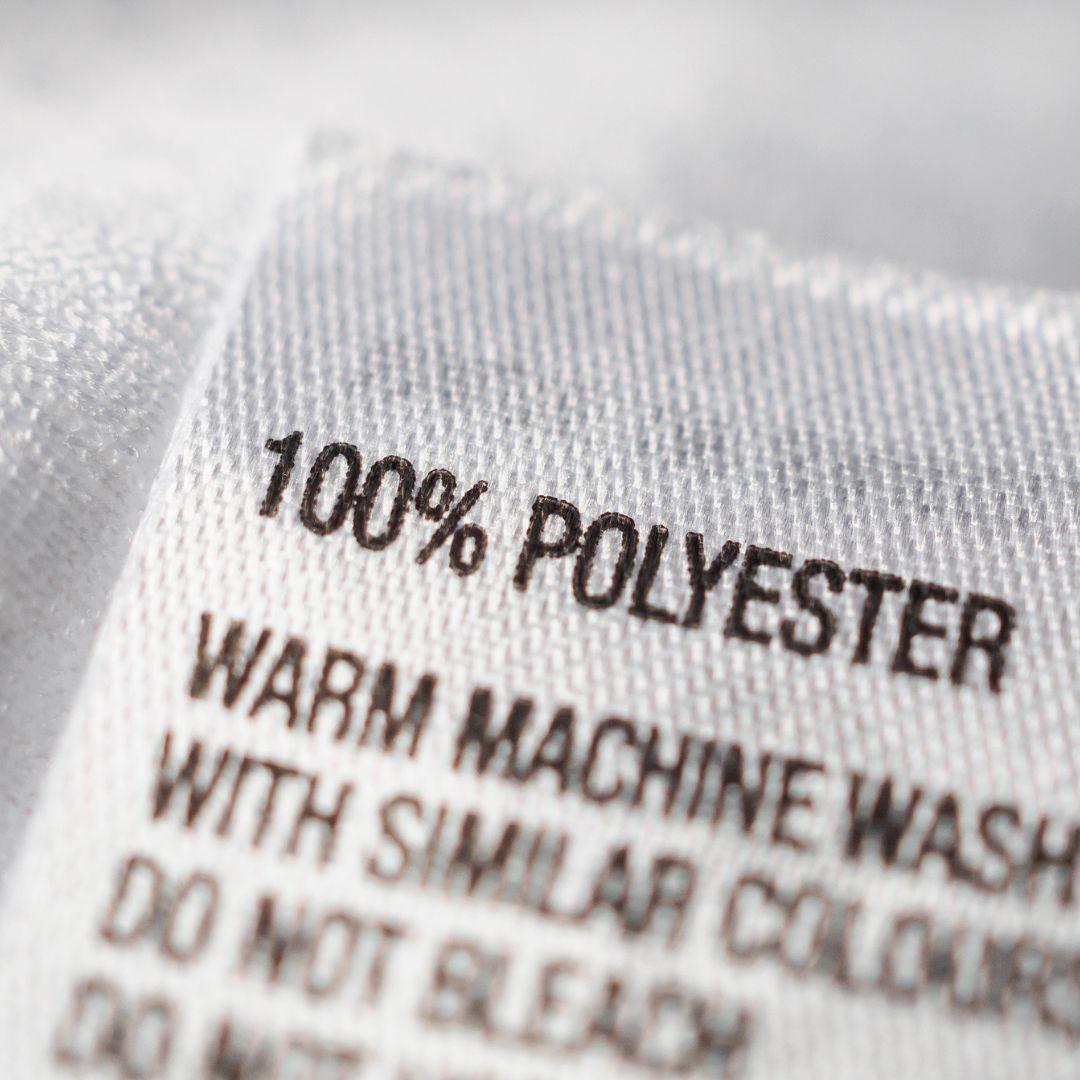Is polyester plastic? This question has been at the forefront of conversations about sustainable fashion for many years. Polyester is one of the most common fabrics used in clothing today, and it's essential to consider the environmental impact of buying and wearing it. In this blog post, we'll explore whether or not polyester is plastic and the implications for its sustainability when it comes to producing and disposing of it. We'll also look into how recycled polyester and whether or not recycled polyester is the solution to the fast fashion problem.
Is polyester plastic?
Polyester clothing is made from synthetic fibers that are derived from a type of polymer called polyethylene terephthalate (PET), which is a type of thermoplastic polyester. Therefore, polyester clothing can be considered a type of plastic.
Polyester clothing is known for being lightweight, durable, and quick-drying, making it a popular choice for athletic and outdoor wear. It is also widely used in fashion because it is versatile and can be made to mimic the look and feel of other fabrics, such as cotton or silk.

How is polyester made?
Polyester is made through a chemical process known as polymerization, which involves combining two or more chemical compounds to form a new compound with a repeating molecular structure. The method of making polyester typically involves the following steps:
Production of the raw materials:
The raw materials used to make polyester are typically derived from petroleum and refined into various chemical compounds, including ethylene glycol and terephthalic acid.
Preparation of the polymer:
To form a polymer, the ethylene glycol, and terephthalic acid are combined in a reactor vessel, along with a catalyst and other additives. The mixture is heated and stirred, causing the molecules to react and form a long-chain polymer.
Formation of the polymer into fibers:
The polymer is extruded through small holes in a spinneret to form long, thin fibers. The fibers are then cooled and solidified into a solid filament.
Processing into the fabric:
The filaments are typically twisted together to form yarns, which can then be woven or knit into fabric. The material can be finished with various treatments, such as dyeing or printing, to create the desired color and pattern.
Polyester can also be produced from recycled materials, such as plastic bottles, through a similar process. In this case, the recycled materials are cleaned, melted down, and transformed into a new polymer that can be used to make polyester fibers and fabrics.
Is recycled polyester sustainable?
Recycled polyester is often considered more sustainable than virgin polyester because it reduces the environmental impact of producing new polyester from petroleum. Using recycled polyester, waste materials such as plastic bottles are diverted from landfills and turned into new polyester products, reducing the need for virgin polyester production.
Recycling polyester also requires less energy and resources than producing new polyester from petroleum. According to some estimates, recycled polyester can require up to 59% less energy and produce up to 32% fewer greenhouse gas emissions than virgin polyester.
But is recycled polyester the best sustainable option?
Recycled polyester may sound great, but it has some serious negative impacts associated with production and use. Here are a few examples:
Chemicals and Energy Usage:
Recycled polyester is made by melting existing polyester and reforming it into new fibers. This process can require chemicals and energy, which can have negative environmental impacts.
Microfiber Shedding:
Recycled polyester, like virgin polyester, can shed microfibers when washed, contributing to microplastic pollution in waterways. While there are ways to mitigate this issue, such as using a washing bag to capture microfibers, it is still a concern.
Quality Concerns:
The quality of recycled polyester can be lower than virgin polyester, limiting its use in specific applications. For example, recycled polyester may not be as strong or durable as pure polyester, which could make it unsuitable for products that need to withstand significant wear and tear.
Water Consumption:
The production of recycled polyester still requires a significant amount of water, particularly during the cleaning and processing stages.
Limited Recycling Infrastructure:
While recycled polyester can be a more sustainable alternative to virgin polyester, it requires proper recycling infrastructure to be effective. Unfortunately, many countries lack the necessary recycling infrastructure to effectively recycle polyester, which limits the impact of recycled polyester.
Overall, while recycled polyester can be a more sustainable alternative to virgin polyester, it is crucial to consider the negative impacts associated with its production and use. Efforts should be made to reduce the use of virgin polyester and to improve the recycling infrastructure to ensure that recycled polyester is effectively recycled and used sustainably.
Can recycled polyester be recycled again?
Sadly, recycled polyester does not solve the world's fast fashion problem. Even though using recycled polyester sounds like the perfect solution. Most recycled polyester clothing uses a mechanical process involving plastic water bottles. Using plastic water bottles to make recycled plastic is a form of downcycling.
There are two main types of processing for recycling polyester clothing:
Mechanical Recycling:
This process involves shredding the polyester fabric into small pieces, then melting and spinning it into new polyester fibers. However, the quality of the recycled fibers is generally lower than that of virgin polyester fibers. The recycled fibers can only be used for products like insulation, carpets, or non-woven fabrics.
Chemical Recycling:
This process involves breaking down the polyester fabric into its chemical components, which can be used to create new polyester fibers or other materials. This process can produce higher-quality fibers than mechanical recycling, and the recycled fibers can be used in a broader range of products, including clothing.
However, both mechanical and chemical recycling have limitations. Each time polyester is recycled, its quality and performance degrade, so eventually, the recycled fibers may no longer be suitable for use in high-quality products. Additionally, some polyester fabrics are more difficult to recycle than others, depending on the fiber length and the presence of dyes or other additives.
Overall, while recycling polyester clothing is a valuable practice, it is important to remember that recycling can only extend the lifespan of polyester fabrics to a certain extent. Eventually, even recycled polyester clothing will need to be discarded or repurposed in other ways.
Should you buy polyester clothing?
Whether or not you should buy a product made with recycled polyester comes down to two questions:
What type of product is it?
The best recycled polyester products are clothing items that must be very durable and water resistant. Examples include:
Activewear:
Recycled polyester is a popular material for activewear because it is durable, moisture-wicking, and quick-drying. Look for recycled polyester leggings, sports bras, tanks, and jackets from brands prioritizing sustainability.
Swimwear:
Recycled polyester is also a popular material for swimwear because it is resistant to chlorine and UV rays. Look for recycled polyester swimsuits and bikinis from eco-friendly swimwear brands.
Jackets and Outerwear:
Recycled polyester can be used to make warm and durable jackets and outerwear. Look for brands using recycled polyester for insulated, rain jackets, and other outdoor gear.
How long are you going to use the recycled polyester item?
Polyester does not break down! If you purchase an item made with polyester, plan to use it for years. Not 2-3 years; we are talking about using an item for 20+ years. Choose high-quality, timeless, classic styles that will withstand the test of time.




